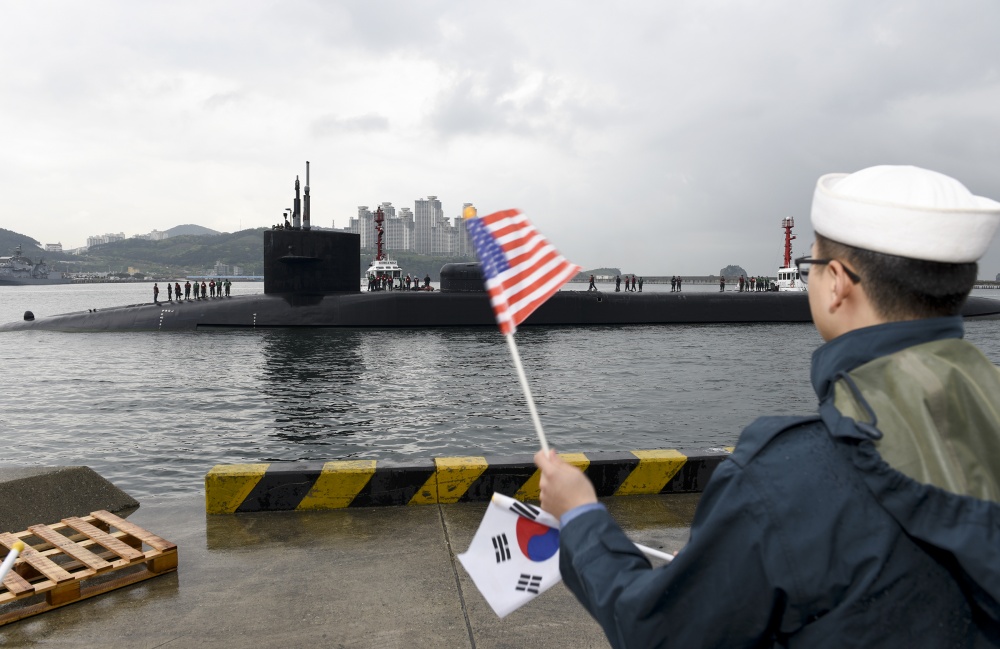
This post was updated to show the committee passed the draft version of the Fiscal Year 2020 National Defense Authorization Act.
The House Armed Services Committee added several provisions to its annual defense authorization bill, but the among most contentious was if the Pentagon should develop a low-yield nuclear weapon to deploy on nuclear ballistic missile submarines (SSBNs).
Support for and arguments against the strategic forces subcommittee mark of the Fiscal Year 2020 National Defense Authorization Act prohibiting the Navy from deploying low-yield atomic weapons on SSBNs broke along party lines.
Prohibiting the Navy from deploying with low-yield nuclear weapons puts the U.S. at a disadvantage, Republican committee members said, because Russia is believed to be developing and deploying smaller warheads. Russia, the argument goes, could be encouraged to use these smaller nuclear weapons if its leaders think the U.S. will be reluctant to respond if their only options were larger atomic weapons.
In contrast, Rep. Adam Smith (D-Wash.), the HASC chair, said the U.S. needs to let Russia and any other nuclear power understand escalation leads to escalation, and the U.S. response to the use of nuclear weapons will be swift and profound.
“We don’t care about a fair fight. We’re going to kick their ass if they take us on,” Smith said. “So, why we’re obsessing about a proportional response, I don’t know.”
Prohibiting the Navy from deploying with low-yield nuclear weapons is really about protecting the integrity of the nation’s nuclear triad – which along with sub-launched missiles, includes land-based and air-launched nukes, said Rep. Jim Cooper, (D-Tenn.), chair of the strategic forces subcommittee. The U.S. Air Force already has a stockpile of low-yield nuclear weapons, so the U.S. leadership still has options for a comparable response, if desired.
However, the underlying notion of the prohibition is taking away an option, Rep. Mac Thornberry (R-Texas), the HASC ranking member said.
“I believe we need more options,” Thornberry said. “We need to be strong.”
The mark passed on a party-line vote, as it did in the subcommittee hearing last week, setting up a likely policy fight later this year when members of the House and Senate in a conference committee settle differences between each chamber’s version of the FY 2020 NDAA.
A conference committee will consider differences involving each chamber’s different topline authorization amount. HASC marked to a $733 billion defense authorization; the Senate version is based on a $750 billion defense authorization.
Throughout the marathon hearing, which completed at about 7 a.m. Thursday, a recurring theme was whether the committee should use the $733 billion topline or consider increasing its top line to match the Senate’s $750 billion toplines.
The $17 billion difference between what the House is considering and what the Senate approved represented cuts to capabilities, Thornberry said.
“I remain concerned about the overall defense topline and what that means for readiness,” Rep. Vicky Hartzler (R-Mo.) said.
Smith, trying to quell the argument about what is an appropriate topline figure, said, “Let’s not act like you can’t defend the country for $733 billion.”
The committee considered most amendments throughout the session with less controversy. The HASC wants the following actions:
- The Navy to include an assessment of the vessels necessary to provide sufficient operations in the Arctic Ocean, the Pacific, Atlantic and the Persian Gulf in the Navy’s upcoming 2019 Force Structure assessment.
- The Navy to brief on improving its purchase of amphibious warfare equipment. The briefing will also assess projected aviation and surface connectors, options to expand aviation projection and amphibious vessels, including options to incorporate vertical launch systems.
- The Navy to study the ability of large and small surface ships to survive a swarm attack. The concern, expressed by the committee, is the Navy may be assuming too much risk with respect to the developing of swarm tactics by adversaries.
- The Navy medical department to assign personnel with the medical equipment, training and ability to determine whether a recruit at a Navy or Marine Corps training depot requires emergency care.
- The Department of Defense to continue its ongoing research into the use of freeze-dried platelet technology. The Marines started using freeze-dried plasma, which includes platelets, nearly three years ago.
- The Department of Defense to make the DD-214, the certificate of release or discharge from active duty service, to be computable and machine-readable.





